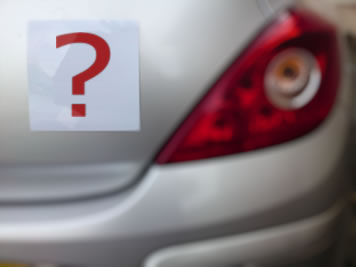What happens in a driving test is a question most learner drivers ask before their big day. Understanding exactly what is going to happen during a driving test is part of being prepared.
Familiarity and preparation is an essential component to tackling what’s ahead, so minimising the unexpected by fully understanding what your examiner is expecting from you during the driving test will help to reduce any nasty surprises.
Although what happens in a driving test is explained elsewhere on the Driving Test Tips website, we shall provide an easy and quick example of what happens on the day.
Arriving for the driving test
How early to arrive for the driving test is important as arriving too early, you may interrupt other learner driver returning from their test and you don’t want to arrive too late as you need to get to the test centre waiting room in good time. Arrive at the test centre around 10 minutes early.
This should avoid interruptions and give you time to find your way to the waiting room. Some DVSA driving test centres use a dedicated premises whilst others are integrated within a business complex. If the latter, signage will display where test candidates should go for tests.

The driving examiner
The driving examiner will meet you in the test centre waiting room and introduce themselves. They will ask to see your provisional driving licence. Ensure you take your plastic photocard with you or the test will be cancelled. The examiner will ask you to lead the way to your car and along the way they will conduct an eye test.
Show Me Tell Me Questions
Update: The new driving test now has 21 show me tell me questions in total (19 previously). One ‘tell me questions is asked just before you drive the car, and a ‘show me’ question is asked whilst you’re driving. You will not fail the driving test if you get one or both of the questions incorrect, you will however receive a minor / fault.
Driving test
The examiner will not explain in too much detail what happens in a driving test. When you are ready however, the examiner will ask you to start the car and to follow the road ahead unless directed otherwise.
What happens in a driving test is to a degree dictated by traffic and the time of day. In busy periods with high volumes of traffic, you will be less likely to drive on busy roads and possibly avoid dual carriageways if congested. Driving examiners want to assess your ability to drive and not to be in traffic queues. Throughout the 40 or so minute practical driving test, you will be expected to:
Drive on a variety of roads.
The various road types include busy town and city roads, small and narrow residential streets with parked cars at the side of the road, country roads and dual carriageways. Although all of these roads may be covered within a single driving test, it is also dependent on whether certain road types are located near to your test centre.
Carry Out a Manoeuvre
The examiner will request one manoeuvre of their choice. They can choose from forward bay parking, parallel parking, reverse bay parking or pulling up on the right. Reversing into a bay will only be done at a test centre that has bays available, or close enough to another test centre that offer bays if your test centre doesn’t. Driving forward into a bay and reversing out can be done at supermarkets or hotel. The new driving test does not conduct the previous manoeuvre of turn in the road or reverse round a corner.
Drive Independently
The independent driving section of the test has increased from 10 minutes to 20 and for most test candidates, a sat nav will be installed by the examiner to follow directions from. For the few test candidates that will not be required to use a sat nav, they will instead need to follow traffic signs. You will not fail the test of you take an incorrect road (providing it’s done safely).
Know the Emergency Stop
Emergency stop procedure has around a 1 in 3 chance of being requested on any driving test. The emergency stop used to be compulsory on every driving test but is now requested on every other test conducted.
The above factors are a part of every practical driving test. Various road traffic systems will be utilised such as small and large junction, roundabouts, crossroads and one-way-systems. Exactly how complicated is relevant to the area in which you are taking your driving test. More rural based driving test centres often have a higher pass rate due to less complicated and busy road systems.
DRIVING TEST RELATED INFORMATION
- Taking driving instructor on test
- Driving test age
- Can I book two driving tests?
- What to wear for driving test
- What to take to driving test
- How many manoeuvres in driving test?
- Crossing hands on driving test
- When to use handbrake
- Speeding
- Are driving tests fixed?
- Driving school instructor pass rates
- Failed driving test
